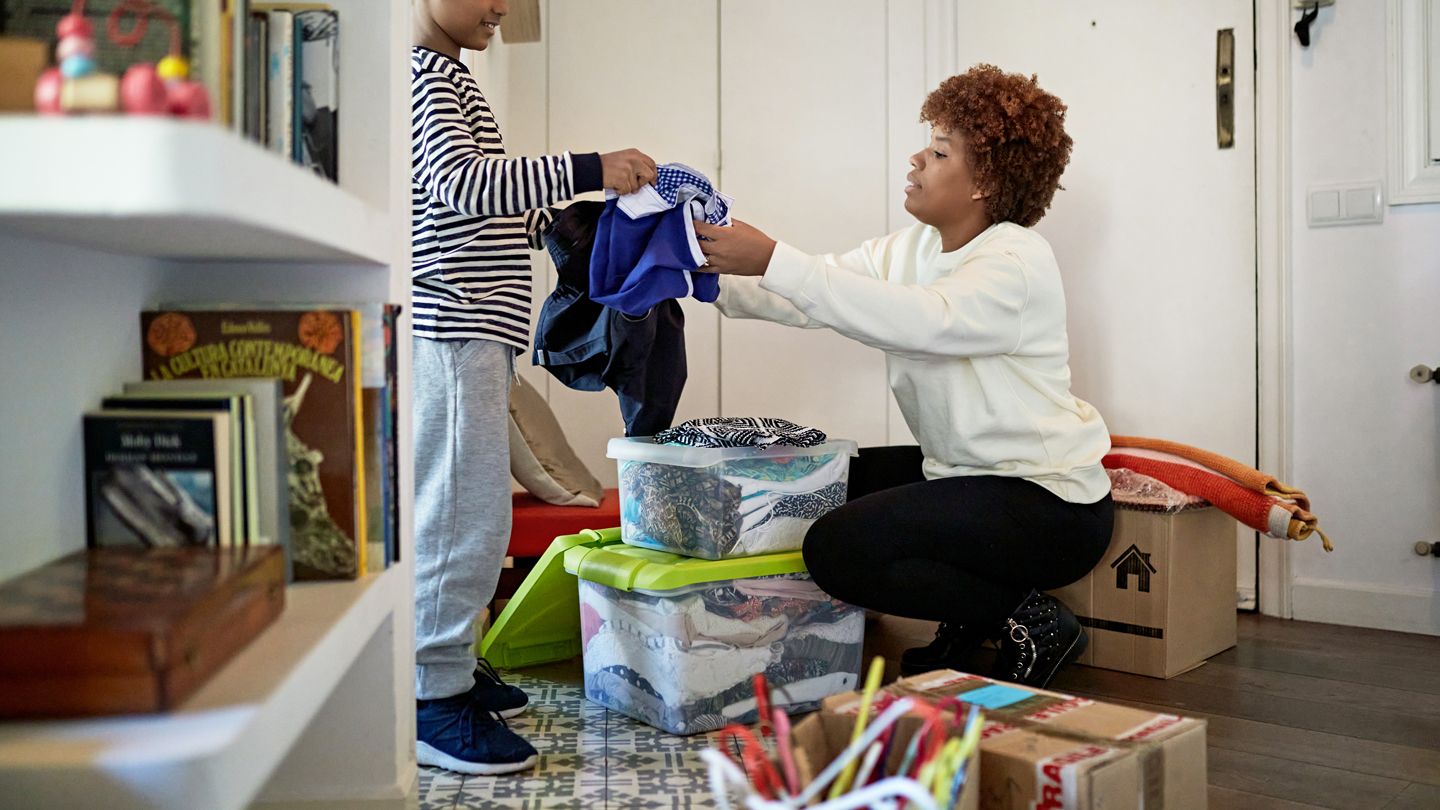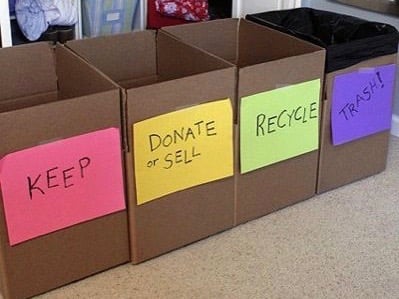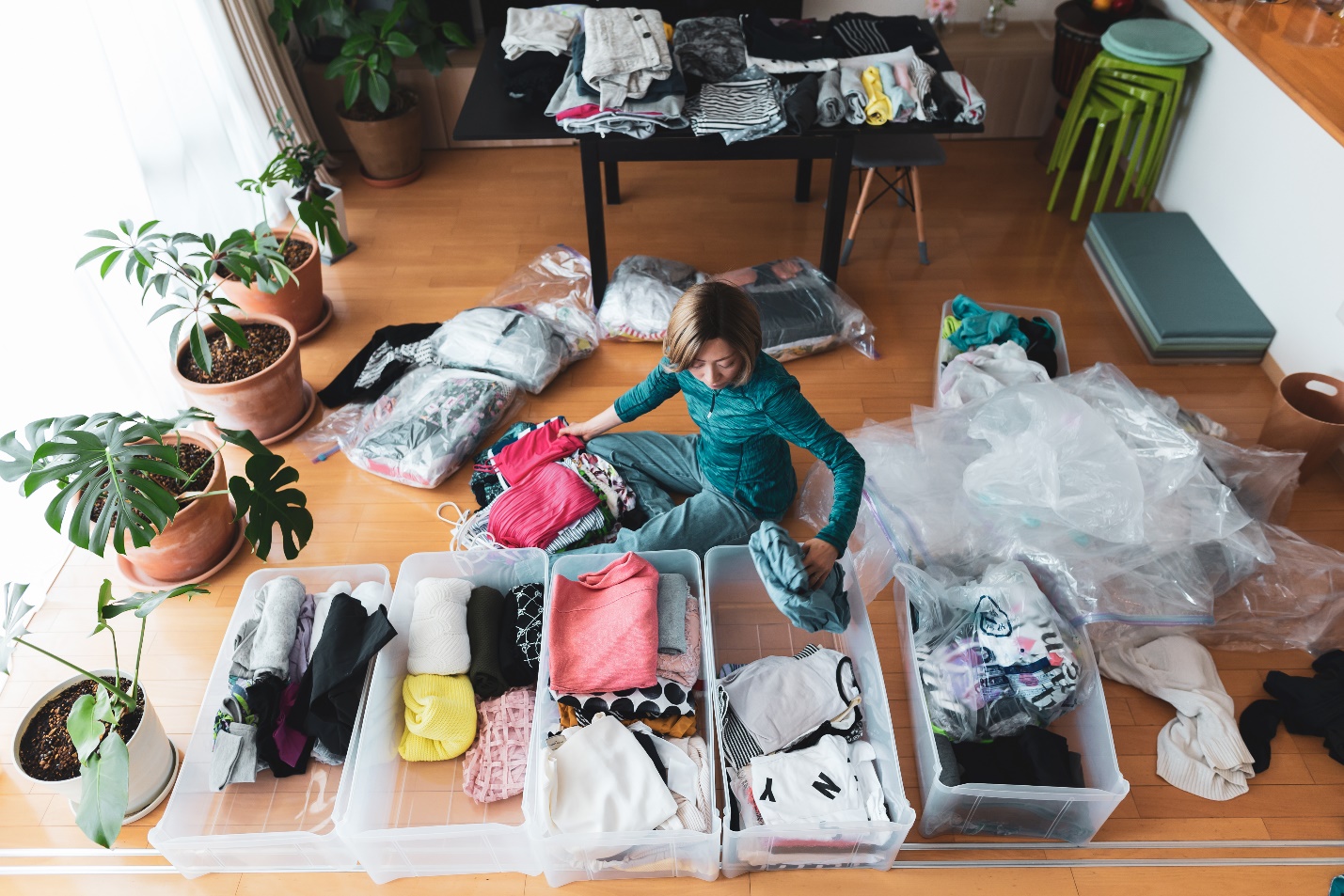Moving houses is a significant event that can be both exciting and stressful. The opportunity to start afresh is exhilarating, but the thought of packing up everything can be overwhelming.
One effective way to alleviate some of the pressure is by decluttering your home before the move. Doing so not only reduces the volume of items to pack, but it also makes it easier to organize and store belongings effectively.
Why Declutter Before Moving?
Decluttering before a move offers several benefits:
- Reduces Stress: With fewer items to pack and unpack, the overall moving process becomes less stressful.
- Saves Money: The fewer items you have to move, the less you'll spend on packing supplies and moving costs, especially if you're paying by weight or volume.
- Facilitates Fresh Start: Moving is an opportunity to start anew. Decluttering enables you to only bring items that you need, love, or bring you joy.
How to Declutter Effectively: A Detailed Guide
Approaching decluttering in a methodical and systematic manner can drastically simplify the process and make your move smoother. Here's a detailed step-by-step guide to help you declutter effectively:
Start Early
Procrastination is the enemy of efficient decluttering. Avoid leaving this task until the last minute, as you may end up hurriedly packing everything, including unwanted or unnecessary items. Instead, begin at least a month before your moving date.
This gives you ample time to go through your belongings, make thoughtful decisions, and prepare your items for packing, selling, donating, or discarding.
One Room at a Time
To prevent becoming overwhelmed, tackle one room at a time. This approach provides a clear start and endpoint for each decluttering session, making the process seem more manageable.
Begin with the least-used rooms or those with the most clutter, like the attic, basement, or garage. This way, you can make significant progress early, which can motivate you to continue the process in other parts of the house.
Sort Items
As you go through each room, separate your items into four categories: 'keep', 'donate', 'sell', and 'trash'.
- Keep: These are items that are regularly used, have sentimental value, or will definitely be needed in your new home.
- Donate: Items that are no longer useful to you but are still in good condition could be of value to someone else. Consider donating these to local charities or community centers.
- Sell: If you have items that are valuable and in good shape but no longer needed, consider selling them online or at a yard sale to make some extra cash.
- Trash: Items that are broken, damaged, or unusable should be discarded.
Be Ruthless
The decluttering process requires making tough decisions. A good rule of thumb is: if you haven't used something in over a year, it might not be worth keeping.
Be honest with yourself about whether you'll really use or need an item in your new home. By being ruthless, you reduce the volume of items you need to pack and move, saving time, energy, and moving costs.
Recycle and Dispose Responsibly
When discarding items, ensure to do so responsibly. Many items like electronics, batteries, and certain types of plastics need to be disposed of in specific ways to prevent environmental harm. Check local regulations for proper disposal methods.
Effective Strategies for Storage
After decluttering, the next step is efficient packing and storage. Here are some strategies:
Use Clear Bins for Storage
Transparent plastic bins are excellent for packing items. The clear visibility allows you to quickly identify the bin's contents without having to open and rummage through it, saving time during packing and unpacking.
Label Boxes Thoroughly
Label each box with the room it belongs to and a brief description of its contents. This system simplifies unpacking, ensuring boxes reach their appropriate rooms in the new house. For added organization, you could use color-coded labels to denote different rooms.
Store Similar Items Together
Grouping similar items together in the same box or bin makes unpacking easier and more efficient. This practice helps when setting up your new home, as you can arrange and organize one category of items at a time.
Take Advantage of Professional Storage Solutions
If you're downsizing or need some extra time before moving all your belongings into your new place, consider professional storage solutions.
Many companies offer secure, climate-controlled units in various sizes, ensuring your items remain safe and in good condition until you're ready to move them into your new home.
Comprehensive Tips for Moving Long Distance
Relocating to a different city or state is often more challenging than a local move. Besides the sheer distance, factors such as new climate, different lifestyles, and the logistics of transporting your belongings across states add to the complexity.
Useful tips for moving long distances can aid in streamlining this process, particularly in relation to decluttering and packing.
More Downsizing, More Savings
Long-distance moving costs can pile up, frequently calculated based on the weight or volume of items being transported. Therefore, decluttering before a long-distance move is even more crucial.
By downsizing further, you're not just reducing the amount of packing and unpacking work, but also directly cutting down on your moving costs. Analyze each item, thinking critically about its use, emotional value, and its place in your new home.
Intelligent Packing for Future Lifestyle
Smart packing involves more than just wrapping your belongings and putting them into boxes. Consider the new climate, culture, and lifestyle of your future home.
If you're moving from a chilly area like Minnesota to sunny Florida, there's little reason to bring a vast collection of winter jackets, snow boots, and other cold-weather gear.
These bulky items take up significant packing space and might not see much use in your new home. This approach applies to other possessions as well – leave behind what doesn't fit into your future life, making the move lighter and simpler.
Invest in Quality Packing Materials
The protection of your belongings during transit becomes more critical in a long-distance move due to the extended travel time and potential for rough handling. Consequently, investing in high-quality packing materials can save you from the heartache and cost of damaged items.
Purchase sturdy boxes, quality packing tape, and ample bubble wrap or packing paper. Specialized packing materials like dish pack boxes for kitchenware or wardrobe boxes for clothes can also be beneficial.
Using these resources ensures your possessions arrive at your new home in the same condition they left the old one.
Utilize a Moving Container or POD
A popular strategy for long-distance moves is using a moving container or Portable On Demand Storage (PODS). These containers, offered by various companies, come in different sizes to accommodate your belongings.
The process is relatively simple. The company drops off the container at your home, and you can take your time loading your items.
Once loaded, the company picks up the container and transports it to your new home or a storage center until you're ready for delivery. This flexible solution eliminates the hassle of driving a rented moving truck across the country and fits well into a relaxed, well-organized moving plan.
Wrapping Up
Decluttering before a move is not only a methodical way to lighten your load but also a therapeutic process that can kickstart a fresh beginning in your new home.
By integrating effective decluttering strategies and efficient packing and storage techniques, you can simplify the moving process significantly. This can save you time, reduce stress, and even cut down on moving costs.
As you embark on your next relocation journey, remember that the key to a smoother transition starts with decluttering and ends with thoughtfully planned storage strategies.





